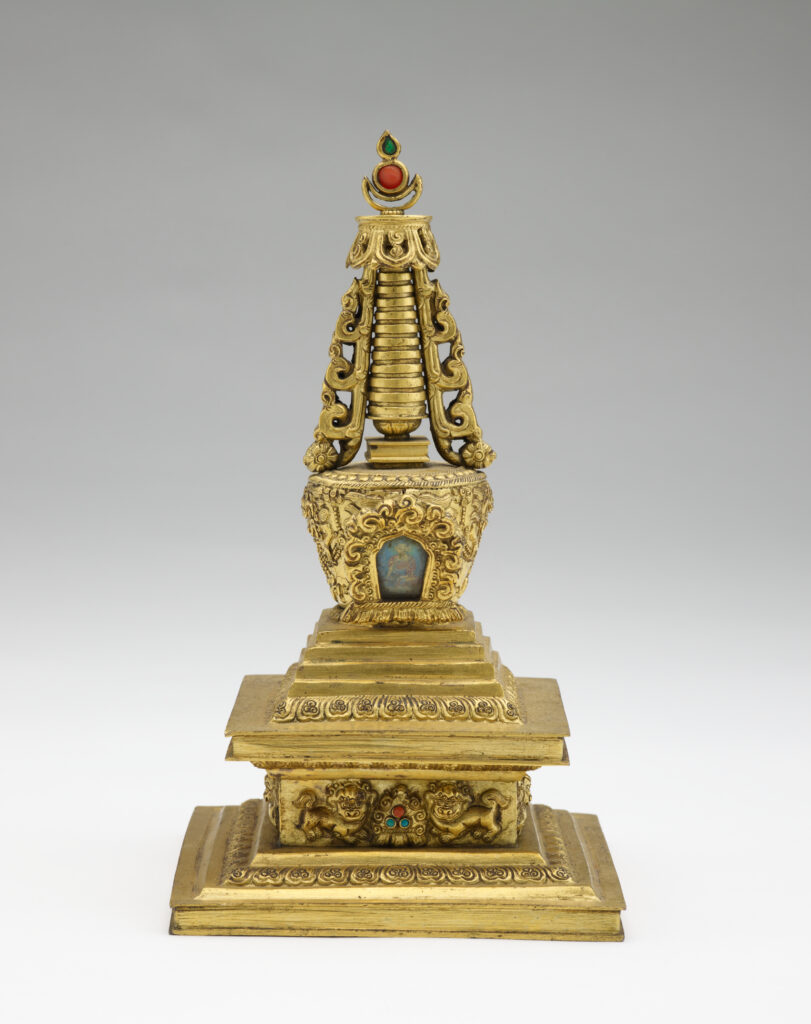Creator: Unknown
Culture: Beijing, China
Title: Stupa
Material: Gilt copper; coral and turquoise insets; polychrome image in window; base sealed and engraved with double vajra; contents inside
Date: 18th century
Size: H x W: 20.3 x 11.4 cm (8 x 4 1/2 in)
Repository: Sackler Gallery 22: Encountering the Buddha, Arthur M. Sackler Gallery
Image Source: Stupa, Arthur M. Sackler Gallery
https://asia.si.edu/object/S2018.30a-b/
Pictured above is an ornate example of a stupa, an important symbol in Buddhism. Dating back from 18th century China, the entire body of the stupa is covered in a gold coating, with ornamental stones decorating both the center of the base and the tip of the spire. The stupa is sculpted into several distinct ‘tiers:’ the rectangular base, featuring lions that surround the decorative stones, the ‘mound,’ the front of which contains a window that displays a small painting of the Buddha (while the back and sides feature mores carving of lions), and finally the spire, shaped into eleven ‘rings’ ascending upwards and ending with a stone-inlaid tip.
The stupa is meant to represent the burial mound of the Buddha, which is demonstrated in this piece by the image of the Buddha seated in lotus position and touching the earth. The design reflects the Buddha’s path to Enlightenment, with the layered spire perhaps representing the steps towards achieving it. Due to its size, this particular stupa was likely used as an offering by those wishing to follow in the Buddha’s steps towards Enlightenment.

